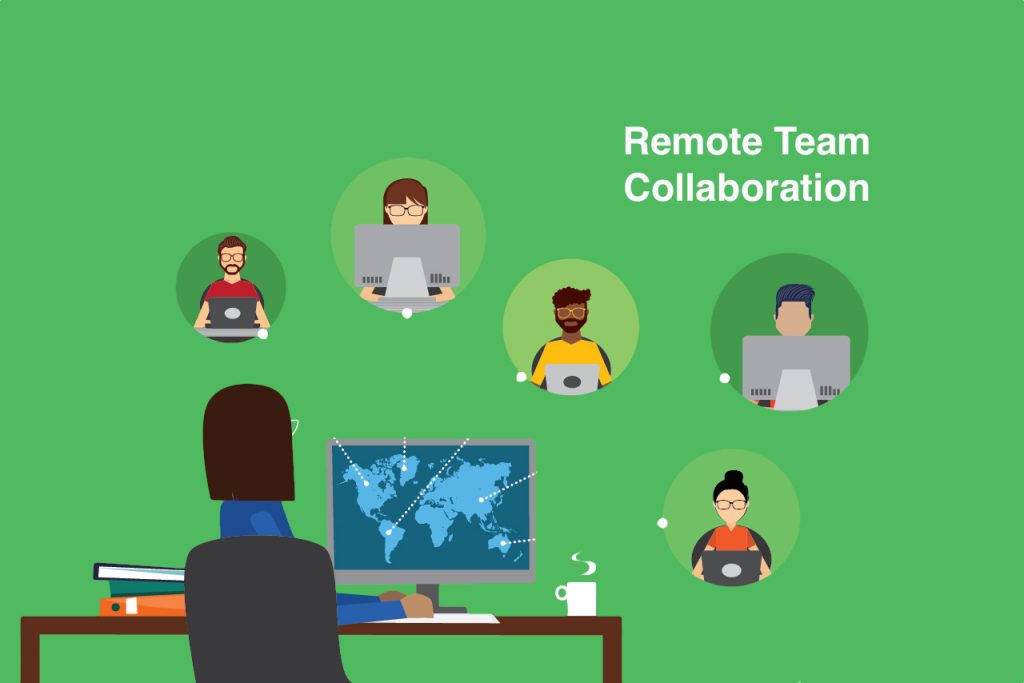Thankfully, new technologies are emerging to ease the pain, making collaboration both easier and more efficient in remote teams.
G Suite and the Cloud
One of the most prominent breakthroughs has been the rise of G Suite as the new standard in workplace intranet, and the migration of productivity apps and services to the cloud. The “cloud” essentially means the apps (and data related to them) are hosted offsite by a third-party provider, so your company doesn’t need to worry about onsite hosting, desktop apps, or self-maintained servers. The cloud has three distinct advantages for workplace collaboration:
Universal Access
First and foremost, the cloud provides for universal, unmitigated access to apps. Rather than being installed locally, apps are available on a per-account basis; as long as you provide your login credentials, you can gain access to your work from just about any device (and from any location). This is important because it allows for more worker flexibility; people can work from home, they can work while traveling, and they don’t have to worry about being away from the office (as long as they have internet). Also, you can rest assured that your team members are all using the most up-to-date version of the software, resulting in fewer discrepancies.
One Source of Truth
Cloud-based collaborative platforms allow the development and maintenance of a single source of truth (SSOT), eliminating redundancies and inaccuracies that could arise in other systems. For example, if you have three workers, each working on the same project locally, on their own devices, any inefficient or inconsistent communication between them could result in discrepancies between these iterations. With one source of truth to work from, there’s never any question as to which version is most accurate or which is canonical.
Real-time Updates
Finally, cloud-based apps allow for real-time collaboration in a way that other apps simply couldn’t. Two people, a thousand miles apart, can independently log into a spreadsheet app, look at the same spreadsheet, and make adjustments to it. Each person sees the other’s edits as they’re happening, making it possible for people actually to work on the same things at the same time. It increases the efficiency of collaborative work while simultaneously reducing errors.
Smaller Tools and Integrations
Technology is also improving collaboration due to the rise of smaller, more agile apps. Novel startups are emerging to offer specific, helpful tools for workplace collaboration, including time tracking apps, apps for niche functions (like managing signed contracts), and project/task management platforms for higher-level planning. What makes these tools so conducive to a more collaborative environment is their ability to be integrated into a high-level suite of tools like G Suite. Google, Microsoft, and other major tech companies are increasingly opening the doors to smaller, inventive tools in the form of add-ons, extensions, and even third-party mods—oftentimes with a dedicated marketplace where you can look for these tools. In other words, you can take advantage of the functionality of these apps without abandoning the core structure of your collaborative processes.
Seamless Communication
Companies are also learning that collaboration requires seamless, fluid communication—and that seamless, fluid communication doesn’t take anyone form. For example, instant message apps are great for exchanging short sentences of information, but they can be distracting due to their near-constant notifications, and they’re not great for navigating complex problems. Video chats provide a simulacrum of face-to-face communication and can be good for longer, more complex conversations, but they can be intrusive and clunky—especially if there’s lag. Modern collaboration solutions attempt to give people a suite of different communication tools, each with a different focus and different strengths and weaknesses. Better yet, they allow these communication tools to be used in sequence with each other—such as project management threads being easily accessible in the context of your email platform.
Feedback and Improvement
Whether you’re looking to develop the next collaboration app that takes the business world by storm or are just looking to get a little more out of the productivity tools you’re already using, one of the most important elements to your success will be collecting feedback and using it to improve. However, well, you’re able to consider and project workplace collaboration needs, there will always be discoveries to make in the course of operations. Listen to the wants, needs, complaints, and compliments of your employees, and use those to guide your future collaboration direction—including which apps you use to improve your team’s capacity to work together.

